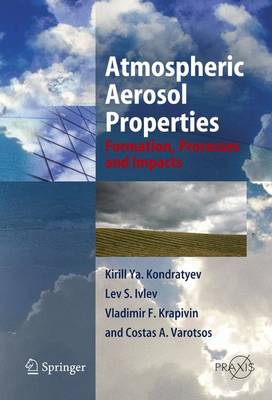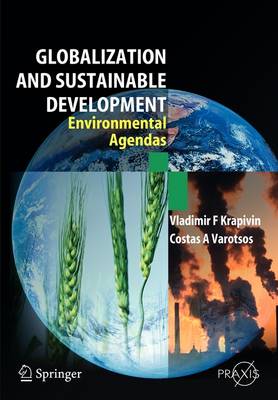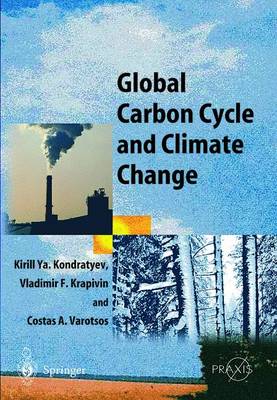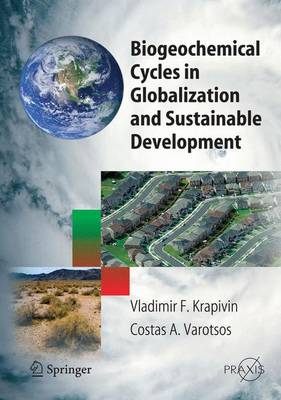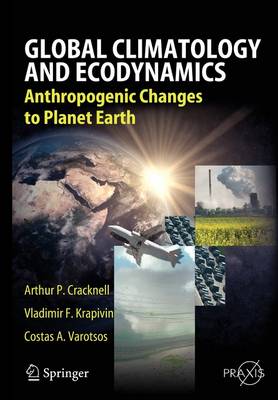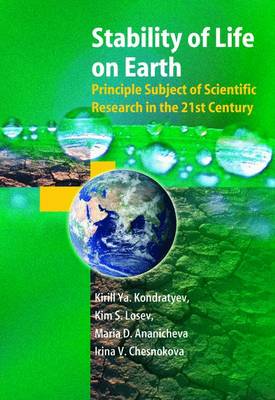Springer Praxis Books
8 total works
Atmospheric Aerosol Properties
by Kirill YA Kondratyev, Lev S Ivlev, Vladimir F Krapivin, and Costas A Varostos
This book provides the first comprehensive analysis of how aerosols form in the atmosphere through in situ processes as well as via transport from the surface (dust storms, seas spray, biogenic emissions, forest fires etc.). Such an analysis has been followed by the consideration of both observation data (various field observational experiments) and numerical modeling results to assess climate impacts of aerosols bearing in mind that these impacts are the most significant uncertainty in studying natural and anthropogenic causes of climate change.
This interdisciplinary book parameterizes the global ecodynamic process. The discussion considers basic global problems of the Nature-Society-System (NSS) dynamics and reviews key problems of ensuring its sustainable development. The book includes an analysis of trends in changing ecological systems and estimates characteristics of current global ecodynamics. The authors propose a new approach to NSS numerical modelling and demonstrate the results of modelling the dynamics of this system's characteristics.
Natural Disasters as Interactive Components of Global-Ecodynamics
by Kirill YA Kondratyev, Vladimir F Krapivin, and Costas A Varostos
Large-scale natural catastrophes are environmental phenomena. Numerous studies in recent years have concluded that the frequency of occurrence of such natural disasters have been incereasing. leading to an enhanced risk of very considerable human and economic losses and the widespread destruction and pollution of habitats, settlements and infrastructure. In 2001 over 650 natural disasters happened around the globe with economic losses exceeding $35 billion. 2004 ended with the South East Asian tsunami on 26th December with its huge toll on life and local economics and this demonstrated that the efffects of such disasters are most keenly felt in poorer or developing regions.
The problem of natural disaster prediction and the implementation of environmental monitoring systems to receive, store and process the information necessary for solutions of specific problems in this area , have been analysed by the three authors of this book, all of whom are internationally respected experts in this field.
Global Carbon Cycle and Climate Change
by Kirill Y. Kondratyev and Vladimir F Krapivin
Professor Kondratyev and his team consider the concept of global warming due to the greenhouse effect and put forward a new approach to the problem of assessing the impact of anthropogenic processes. Considering data on both sources and sinks for atmospheric carbon and various conceptual schemes of the global carbon dioxide cycle, they suggest a new approach to studies of the problem of the greenhouse effect. They assess the role of different types of soil and vegetation in the assimilation of carbon dioxide from the atmosphere, and discuss models of the atmosphere ocean gas exchange and its role in the carbon dioxide cycle, paying special attention to the role of the Arctic Basin. The authors also consider models of other global atmospheric cycles for a range of atmospheric constituents, and conclude by drawing together a range of scenarios on modelling the global carbon cycle.
Biogeochemical Cycles in Globalization and Sustainable Development
by Vladimir F Krapivin
This book opens new approach to the study of global environmental changes having unfourable character for peoples and other living systems. Main advantage of this book consists in the accumulation of knowledge from different sciences to parameterize global biogeochemical cycles in the context of globalization and sustainable development. Basic global problems of the nature-society system dynamics have been considered and the key problems of ensuring its sustainable development have been discussed. An analysis has been made of the present trend in changing ecological systems and characteristics of the present global ecodynamics have been estimated. The emphasis has been placed on the accomplishment of global geoinformation monitoring, which could provide a reliable control of the environmental processes development with further obtaining prognostic estimates of consequences of realization of anthropogenic projects. A new approach to the nature-society system numerical modelling has been proposed and demonstrative results have been given of modelling the dynamics of this system’s characteristics in cases of realization of some scenarios of anthropogenic impact on the biogeochemical cycles. The importance and the need has been emphasized of development of adaptive algorithms of monitoring data processing which make it possible to reduce the economic expenses on its accomplishment and raise the reliability of the obtained estimates of the global ecodynamics characteristics. Perspective approaches have been suggested for the development of technology to estimate the risk of realization of decisions on ecosystems’ management. The realization of this approach allows integration within a complex structure of all international and national means of environmental monitoring and provides a tool for objective evaluation of the environmental quality. The main purpose of this book is to develop an universal information technology to estimate the state of environmentalsubsystems functioning under various climatic and anthropogenic conditions and to assess the dependence of global bviogeochemical cycles on the globalization processes. Applied mathematicians, geophysicists, hydrologists, socio-economists, statesmans and other researchers of global change will find a wealth of information and ideas in this book.
Global Climatology and Ecodynamics
by Arthur Philip Cracknell and Vladimir F Krapivin
The exclusive role of natural ecosystems is a key factor in the maintenance of the biospheric equilibrium. The current global crisis is largely caused by their dramatic decline by 43% in the past hundred years. Ignoring the immutable laws and limitations which determine the existence of all living things in the biosphere could lead humanity to an ecological catastrophe. This book presents the ecological, demographic, economic and socio-psychological manifestations of the global crisis and outlines the immutable laws and limitations which determine the existence of all living things in the biosphere.
The authors are eminently qualified to write about the problems associated with the global crisis and consider the causes behind humanity's conflict with its environment. V. Danilov-Danilian, Associate of the Russian Academy of Sciences and Russia's former Minister of the Environment, and K. Losev, professor at Moscow State university, are leading Russian ecologists and I. Reyf is a journalist who specializes in ecology and global development. Dr. Danilov-Danilian works on the economics of nature management, economic and mathematical model building, sustainable development theory and ecology. Dr Losev is the chief researcher and head of the division of the VINITI. All the authors have published numerous papers, articles and books on such subjects as glaciology, hydrology, environment studies, global change and sustainable development.
Stability of Life on Earth
by Kirill Y. Kondratyev, Kim S. Losev, Maria D. Ananicheva, and Irina Chesnokova
In Stability of Life on Earth, Professor Kondratyev and his team show that the concept of biotic regulation is of fundamental importance in solving a wide range of environmental and other problems. They put forward a new approach to the solution of old environmental problems. Beginning with a look at the geographic environment and structural units within it, they show that ecosystems represent a set of homogeneous, closely-correlated communities of organisms and their environment. Biologists call such correlated communities ‘biogeocenoses’, and they are similar to the corporate structures in economic systems and interact competitively with each other. On the basis of competitive interaction in the biosphere, self-organisation and management take place. The authors show how human economic activity perturbed balances in natural biogeochemical cycles, eliminating and strongly modifying natural land cover, the 20th Century being the time when human activities ‘collided’ with Nature. They consider scientific bases for the stability and sustainability of life, and demonstrate how the scale and intensity of human-induced destruction of Nature and resultant feedback mechanisms have continuously expanded. They consider the likelihood of increasing numbers of natural disasters as a result of such activities, and propose that sustainable development should become a principal research topic during the 21st Century.
